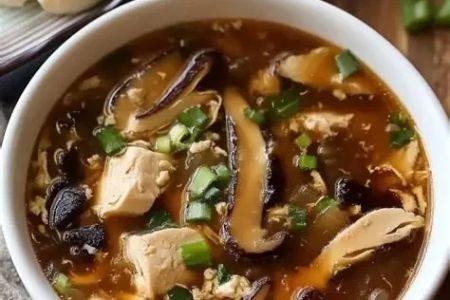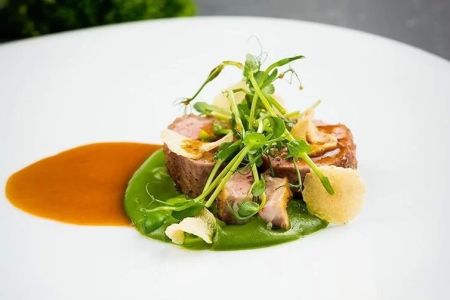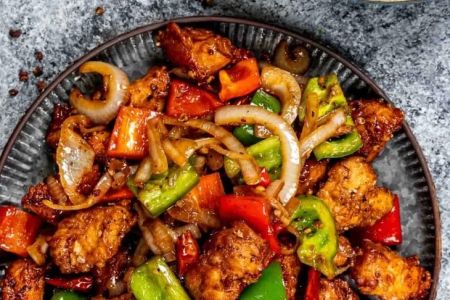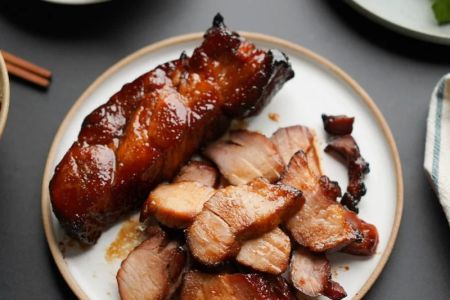- the-cultural-significance-of-five-flavors-in-chinese-cuisine
- sweetness-balance-and-comfort-in-every-bite
- sourness-a-flavor-of-awakening-and-appetite
- saltiness-the-essential-flavor-connector
- bitterness-the-underestimated-depth-of-chinese-dishes
- umami-the-soul-of-savory-excellence
- real-experiences-how-five-flavors-shape-memorable-meals
- explore-chinese-culinary-culture-with-chinese-food
1. The Cultural Significance of Five Flavors in Chinese Cuisine
In Chinese culinary tradition, flavor is more than taste—it's philosophy. The concept of the five flavors in Chinese cuisine: sweet, sour, salty, bitter, and umami (often referred to as “xian” in Chinese) represents a balance between elements, emotions, and even health. This holistic understanding is rooted in Traditional Chinese Medicine and ancient gastronomy, where each flavor corresponds to an organ, emotion, and natural element.
These five flavors are not just randomly added to dishes—they interact harmoniously, creating the layered complexity that defines authentic Chinese food. Whether you’re enjoying a home-cooked meal or a banquet dish, understanding the five flavors opens a new dimension of appreciation.
2. Sweetness – Balance and Comfort in Every Bite
2.1. More Than Just Sugar
In Chinese cuisine, sweetness often serves to neutralize heat or sourness, offering balance rather than dominance. It doesn’t necessarily come from sugar—ingredients like honey, rock sugar, red dates, and sweet soy sauce add depth and nuance.
2.2. Signature Dishes with Sweetness
Think of “Sweet and Sour Pork” or “Red Braised Pork Belly.” These dishes use sweetness to mellow richness or acidity. Even savory soups like “Lotus Root and Peanut Soup” carry hints of natural sweetness that make them comforting and familiar.
2.3. The Emotional Connection
Sweetness is traditionally linked to the spleen and to joy. That’s why sweet dishes often appear in festive meals or comfort foods meant to nourish and uplift. It’s a flavor of togetherness.
3. Sourness – A Flavor of Awakening and Appetite
3.1. The Appetite Enhancer
Sourness stimulates the salivary glands and digestion, making it an ideal flavor to open meals. In northern China, pickled vegetables and vinegar-based sauces are often served as starters to awaken the appetite.
3.2. Not Just About Vinegar
While vinegar—especially black vinegar—is central, sourness can also come from fermented vegetables, tamarind, or fruits like hawthorn. In Sichuan cuisine, for instance, “Suan La Fen” (sour and spicy noodles) is a street food favorite that balances heat with tanginess.
3.3. Philosophical and Physical Effects
In TCM, sour flavor connects to the liver and emotional restraint. It's used to "gather" energy, promoting stability and focus. This balance of body and flavor is why sourness is so respected.
4. Saltiness – The Essential Flavor Connector
4.1. A Base Note in Every Dish
Saltiness is perhaps the most universal of the five flavors, but in Chinese cuisine, it goes beyond simple seasoning. It enhances, binds, and deepens other tastes. Soy sauce, oyster sauce, and salted fish are iconic carriers of saltiness.
4.2. Culinary Techniques and Applications
Salt-curing and braising are traditional techniques that make saltiness integral to the cooking process, not just a finishing touch. Dishes like “Mapo Tofu” or “Salted Egg Prawns” rely on layered salinity to highlight other ingredients.
4.3. Saltiness and the Kidney
Linked with the kidney in Chinese medicine, saltiness is believed to promote water metabolism and bone strength. A well-salted meal, properly balanced, supports the body’s foundational energy.
5. Bitterness – The Underestimated Depth of Chinese Dishes
5.1. A Flavor for the Brave
Bitterness is often misunderstood in Western cooking, but in Chinese cuisine, it's embraced as essential. From bitter melon stir-fried with eggs to herbal broths, bitterness adds grounding, depth, and authenticity.
5.2. When Bitterness Shines
Many Cantonese soups feature bitter herbs that cool the body, especially in hot climates. These dishes aren’t just flavorful—they’re medicinal. They teach us to appreciate restraint, contrast, and patience in taste.
5.3. The Philosophical Role of Bitter
Bitterness is linked with the heart and introspection. It’s associated with clarity, cleansing, and a deeper appreciation of complexity. Much like life, it teaches us that not all flavors are immediately gratifying—but all are meaningful.
6. Umami – The Soul of Savory Excellence
6.1. The “Xian” Factor
Often referred to as “xian” in Chinese, umami is the fifth taste recognized more recently in Western science but embedded in Asian cooking for centuries. It’s that “can’t-stop-eating” sensation found in broths, braises, and sauces.
6.2. Sources of Umami
Ingredients like dried mushrooms, fermented bean paste, aged soy sauce, and dried shrimp all contribute powerful umami. A bowl of slow-cooked pork bone soup or hotpot broth showcases umami at its most indulgent.
6.3. Body and Harmony
Umami doesn’t overwhelm—it harmonizes. It draws out other flavors and builds lasting satisfaction. In Chinese food philosophy, it’s the flavor that brings a dish together, much like qi unifies body and spirit.
7. Real Experiences – How Five Flavors Shape Memorable Meals
Yifan, a food vlogger based in Shanghai, once described his grandmother’s lotus root soup as “the flavor of comfort.” It was sweet, savory, and just slightly bitter from the herbs—a perfectly balanced bowl that soothed him on cold days.
Meanwhile, Lina, a Malaysian-Chinese chef, explains how mastering these five flavors elevated her career. “Once you understand them, you stop cooking recipes—you start cooking feelings,” she says. Her signature chicken rice includes a pickled sour note to balance the richness of the poached bird and a soy-based sauce layered with umami.
8. Explore Chinese Culinary Culture with Chinese Food
Whether you're a home cook or a curious traveler, learning to recognize the five flavors in Chinese cuisine: sweet, sour, salty, bitter, and umami can transform how you understand food—and life. It’s a journey through history, medicine, and emotion, all on a single plate.
For those ready to explore authentic ingredients, guided food tours, or educational culinary content, Chinese Food is your trusted guide. Let us help you bring balance to your kitchen, flavor to your table, and meaning to every meal.








